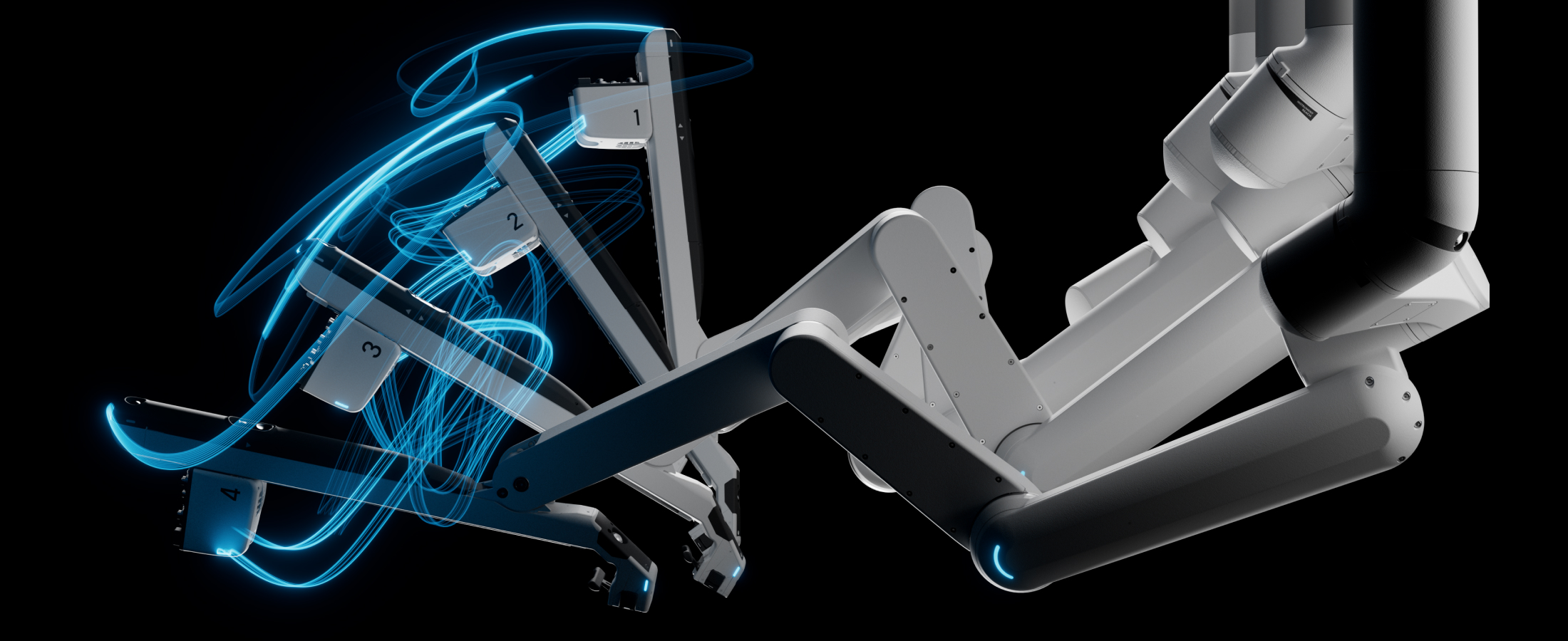

As Intuitive’s senior director of interaction design, Ryan Williams plays a key role in the look and feel of the company’s robotic systems and products. He takes this work very seriously; for him, the stakes couldn’t be higher.
“Every time a surgeon uses one of our systems, there’s potentially a life on the line,” he says. “So everything has to be as easy and precise as possible. We want to eliminate distractions. If surgeons are trying to figure out where a particular button is, or why some part of the system isn’t doing what they want, precisely when they want it to, they’re not fully focused on the patient.”
Our user-centered approach is a key reason that Intuitive systems have a strong reputation for being so, well, intuitive. This ease of use shows up in many ways. To give just one example, the models of Intuitive’s da Vinci system share a common user interface on the surgeon console—when a surgeon sits down at the console, they can be sure that what they’ve learned on one model will for the most part carry over to other models. As a result, surgeons and hospital executives can be confident that clinical staff won’t need extensive retraining when adding a new system or upgrading an older one.

Among those who appreciate the company’s relentless focus on simplifying the surgeon’s work is John Porterfield, a general surgeon at the University of Alabama at Birmingham. He points to Intuitive’s innovative augmented visual system as a great example. The feature, called Firefly, uses fluorescence to allow surgeons to clearly visualize anatomical structures such as blood vessels and bile ducts. Dr. Porterfield says the technology is not only very useful, but is fully integrated into the rest of the system, allowing him to toggle easily between augmented and normal views. “It’s so effortless,” he says. “It allows me to stay in the flow of the procedure.”
Dr. Porterfield also points to the My Intuitive app, which provides surgeons and care teams with detailed metrics on surgical performance—insights that can help him improve efficiency and clinical proficiency. He says the app has actually changed his approach to surgery; during procedures, he now thinks in terms of the app’s “timeline,” which provides a detailed moment-to-moment record of a procedure. With this in mind, he is more proactive about involving residents and fellows in procedures whenever it’s appropriate.
Philip Thompson, Intuitive’s vice president of design, says the company’s user-centered design philosophy goes back to its roots; the scientists and engineers who started the enterprise were driven by a desire to create the best systems and products possible for hospitals, surgeons, and patients. That vision still holds sway, he says: “After all, it’s the name of our company: Intuitive. That’s always our focus.”
The best way to do that, says Russell Blanchard, Intuitive’s director of product design, is by talking with actual users—surgeons and care teams—to better understand precisely what they want. “Design is about people, not things,” he says. “Sometimes designers can get too focused on the object, the technology. They forget that a human being is going to use it. We always put clinicians and patients first.”
To help designers fully understand the evolving needs of hospitals and clinicians, Intuitive has developed a comprehensive process to get feedback from the surgeons and care teams who use our systems every day. This year, the company will conduct more than 90 intensive panels, with over 1,000 participants, including surgeons, nurses, healthcare leaders, technicians, robotic coordinators, and others. Some of these sessions take place at the company’s offices in California and Atlanta, while others occur online. In addition, Intuitive designers also regularly visit hospitals in the U.S., E.U. and Asia-Pacific to observe procedures in person.
“This collaboration really helps us to see what’s working, and what might need to be improved,” says Williams, Intuitive’s director of interaction design. “The more we understand who we’re designing for, the more we can continue to develop systems and products that make it easier for surgeons and hospitals to care for their patients.”
Important safety information
Serious complications may occur in any surgery, including surgery with a da Vinci system, up to and including death. Examples of serious or life-threatening complications, which may require prolonged and/or unexpected hospitalization and/or reoperation, include but are not limited to, one or more of the following: injury to tissues/organs, bleeding, infection, and internal scarring that can cause long-lasting dysfunction/pain.
Risks specific to minimally invasive surgery, including surgery with a da Vinci system, include but are not limited to, one or more of the following: temporary pain/nerve injury associated with positioning; a longer operative time, the need to convert to an open approach, or the need for additional or larger incision sites. Converting the procedure could result in a longer operative time, a longer time under anesthesia, and could lead to increased complications. Contraindications applicable to the use of conventional endoscopic instruments also apply to the use of all da Vinci instruments.
For important safety information, including surgical risks and considerations, please also refer to www.intuitive.com/safety. For a product’s intended use and/or indications for use, risks, full cautions, and warnings, please refer to the associated user manual(s).
Individual outcomes may depend on a number of factors—including but not limited to—patient characteristics, disease characteristics, and/or surgeon experience.
Da Vinci Xi/X system precaution statement
The demonstration of safety and effectiveness for the representative specific procedures did not include evaluation of outcomes related to the treatment of cancer (overall survival, disease-free survival, local recurrence) or treatment of the patient’s underlying disease/condition. Device usage in all surgical procedures should be guided by the clinical judgment of an adequately trained surgeon.